Over the last few months, we have been working hard doing the interviews and analysing the survey data from 2813 participants. These were all parents of at least one child younger than 11 years old, living in different regions of the UK. The majority (78.5%) were traditional couples where the mother was the primary caregiver and the father was the primary breadwinners. Further 12.3% were equal sharers and 9.2% were role-reversed couples. There are lots of interesting findings and we are excited to share some initial results from our survey! First, we looked at how equal-sharers, role-reversed and traditional couples organise work and childcare.
1. Do role-reversed arrangements mirror those of traditional couples?
Role-reversed couples tend to share housework and childcare slightly more equally than traditional couples. While mothers in traditional arrangements perform almost all of the tasks by themselves, primary caregiving fathers have more involved partners.
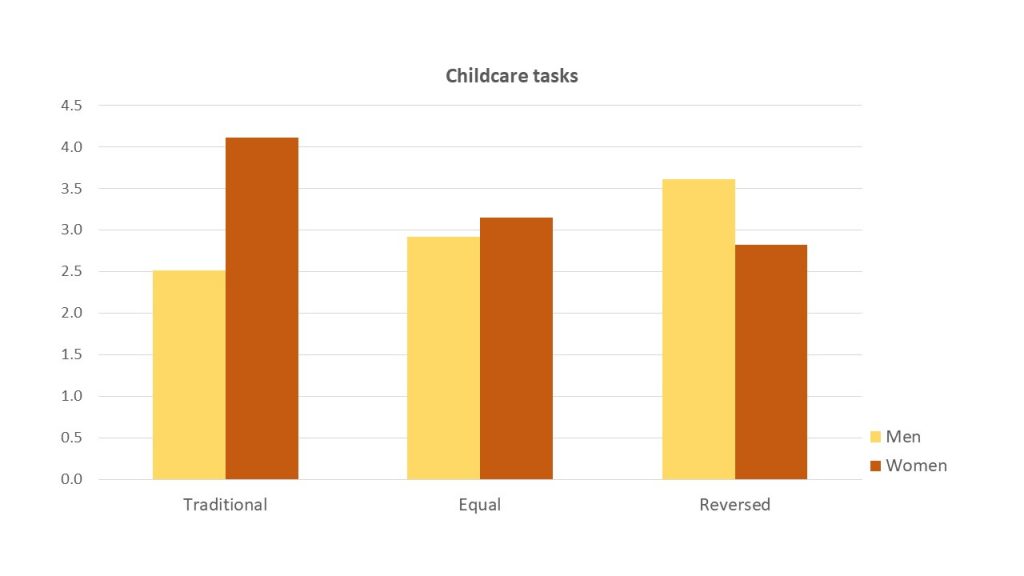
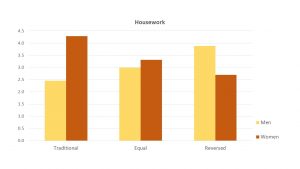
2. How do couples share daily physical care?
Daily physical care seems to be split according to the availability of the breadwinning partner in the evenings and nights: tasks such as feeding, changing, dressing and supervising morning routine are performed almost exclusively by the main caregiver regardless of their gender; putting children to bed and getting up at night are shared more equally in each of the parenting arrangements.
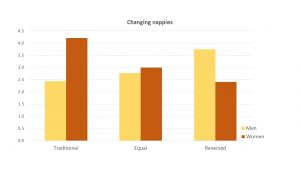
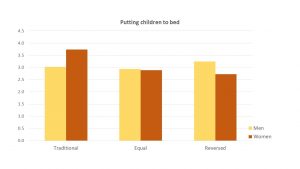
3. What are the most persistent aspects of gendered parenting?
Responsibility for childcare stands out as the most gendered and change-resistant domain. While women in traditional arrangements carried out almost all the planning and scheduling, made arrangements for childcare and chose a day-care or school, role-reversed couples shared these tasks more equally. In couples who are otherwise equal sharers, this is where equality was least likely.
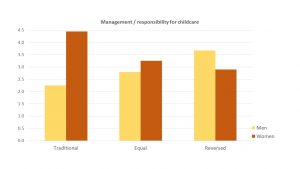
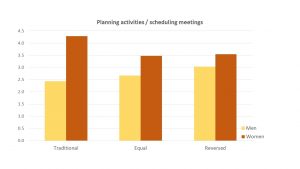
4. How do equal-sharers arrange work and childcare?
Both male and female equal sharers worked shorter hours than male and female breadwinners. Their personal incomes were lower than main breadwinners’ incomes but as a family they earned more.
On average, equal sharers provided two more weekly hours of childcare each compared to main breadwinners, and their children spent approximately nine more hours per week in non-parental care. Equality was achieved through a combination of slightly shorter work hours, slightly longer childcare hours compared to breadwinners, and more hours of non-parental care.
5. Are there differences in leave taken after the birth of a child?
The duration of leave was mainly determined by a parent’s gender. There were no significant differences between women in the three groups. Men’s duration of leave did vary by their family role but was much shorter than women’s in all arrangements.
